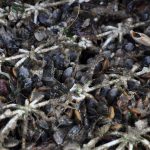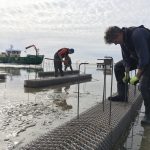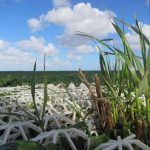Intergovernmental Science-Policy Platform on Biodiversity and Ecosystem Services (IPBES)
IPBES has now released the Summary for Policymakers (SPM) of the Global Assessment report. The SPM presents the key messages and policy options, as approved by the IPBES Plenary. The full six-chapter Report (including all data) is expected exceed 1,500 pages and will be published later in 2019.

- Over 1,000,000 species are threatened with extinction
- Current global responses are insufficient
- ‘Transformative changes’ are needed to restore and protect nature
- Opposition from vested interests must be overcome for public good
For Marine Systems:
- 66% of the marine environment have been significantly altered by human actions
- In 2015, 33% of marine fish stocks were being harvested at unsustainable levels; 60% were maximally sustainably fished, with just 7% harvested at levels lower than what can be sustainably fished
- Plastic pollution has increased tenfold since 1980
- Over 300-400 million tons of heavy metals, solvents, toxic sludge and other wastes from industrial facilities are dumped annually into the world’s waters
- Fertilizers entering coastal ecosystems have produced more than 400 ocean ‘dead zones’, totaling more than 245,000 km2, a combined area greater than that of the United Kingdom.
The IPBES Global Assessment Report on Biodiversity and Ecosystem Services is the most comprehensive analysis ever completed. It builds on the landmark Millennium Ecosystem Assessment (MEA) of 2005. Compiled by 145 expert authors from 50 countries, the Report assesses changes over the past five decades, providing a comprehensive picture of the relationship between economic development pathways and their impacts on nature. It also offers a range of possible scenarios for the coming decades. The average abundance of native species in most major land-based habitats has fallen by at least 20%, mostly since 1900. More than 40% of amphibian species, almost 33% of reef-forming corals and more than a third of all marine mammals are threatened. The picture is less clear for insect species, but available evidence supports a tentative estimate of 10% being threatened. At least 680 vertebrate species had been driven to extinction since the 16th century and more than 9% of all domesticated breeds of mammals used for food and agriculture had become extinct by 2016, with at least 1,000 more breeds still threatened.
Despite progress to conserve nature and implement policies, the Report finds that global goals for conserving and sustainably using nature and achieving sustainability cannot be met by current trajectories, and goals for 2030 and beyond may only be achieved through transformative changes across economic, social, political and technological factors. With good progress on components of only four of the 20 Aichi Biodiversity Targets, it is likely that most will be missed by the 2020 deadline.
See link for more information.
Restoring Oysters
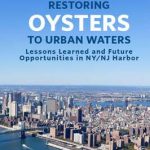 McCann, M., 2019. Restoring oysters to urban waters: lessons learned and future opportunities in NY/NJ Harbor. The Nature Conservancy, New York, NY, 65pp. see PDF and link
McCann, M., 2019. Restoring oysters to urban waters: lessons learned and future opportunities in NY/NJ Harbor. The Nature Conservancy, New York, NY, 65pp. see PDF and link
Before New York City was The Big Apple, it was The Big Oyster. Report tells the story of the eastern oyster, Crassostrea virginica in one of the most heavily urbanized estuaries in the world. Waters have been the subject of over 20 years of research and restoration, including an upcoming scaling-up of efforts in the near future. This assesses past efforts, and synthesizes lessons learned and challenges ahead.
BESE-Elements from Potato Waste as a Biodegradable Material
Could a byproduct of potato chip manufacturing be the next ‘big thing’ for coastal conservation? An innovative potential solution using environmental friendly materials to restore ecosystems and habitats is currently being assessed (see https://www.bese-elements.com/#, https://www.bese-elements.com/uncategorized/in-praise-of-the-potato/, https://www.bese-products.com/).
BESE-elements – how it all started
A number of efforts were made in 2012 to improve the health of littoral mussel beds in the Netherlands. While these activities yielded greater knowledge only a few attempts resulted in the successful restoration of mussel beds. Young mussel recruits were being impacted by predators and sediment burial/destabilization. As a potential solution, a byproduct of potato chip manufacturing is being used to construct a 3-d matrix used previously for the recruitment of freshwater mussels. However, the basic material used was plastic, not a desirable option for current conservation efforts. A novel biodegradable alternative has been developed by the Bureau Waardenburg in Netherlands, called “Biodegradable Elements for Starting Ecosystems (or BESE-elements)”, consisting of biopolymers from potato waste. In contrast to many other bioplastics, the product undergoes complete breakdown in a natural environment.
For Ecosystem and Habitat Restoration
Initially the BESE-elements® create a temporary 3-d structure for the settlement and association of various aquatic organisms. After a period of time after sufficient organisms have become established an enlarged natural habitat structure is formed on the BESE-elements® as they break-down. Currently the BESE-elements® have been used for the recovery of natural mussels beds and oyster reefs in Europe, the US, and Australia. Other pilot projects include the restoration of salt marsh vegetation, seagrasses (submerged aquatic vegetation or SAV), mangroves, reed beds, and coral reefs. Since the structure is modular a variety of shapes can be customized based on one’s project needs (see http://www.merces-project.eu/?q=content/restoration-marine-ecosystems-using-natural-biodegradable-materials and http://www.merces-project.eu/?q=content/wp2-field-activities-restoration-marine-shallow-soft-bottoms-habitats, https://www.bese-elements.com/news/oyster-restoration/, https://www.bese-elements.com/uncategorized/oyster-restoration-florida/, https://www.buwa.nl/en/bese-elements-for-oysters.html).
Contact Karin Didderen (k.didderen@buwa.nl), Malenthe Teunis (m.teunis@buwa.nl), or Wouter Lengkeek (w.lengkeek@buwa.nl), Bureau Waardenburg for more information.
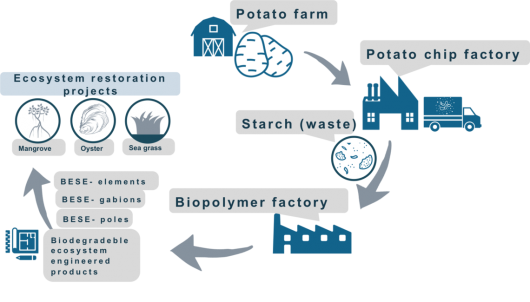
The Native Oyster Restoration Alliance (NORA)
The Native Oyster Restoration Alliance (NORA) is a European network whose aim is to enhance and restore the native European flat oyster (Ostrea edulis). Network members represent govt. employees, scientists NGOs, oyster growers, and other private groups. NORA was an outgrowth of a workshop on oyster restoration held in Berlin, Germany on Nov. 2017. That meeting was organized by the German Federal Agency for Nature Conservation (or BfN), and the Alfred-Wegener-Institute Helmholtz-Centre for Polar and Marine Research (or AWI) and was attended by 65 experts from 10 European countries and the U.S.

Oyster bed (Ostrea edulis). Photo: K. Janke

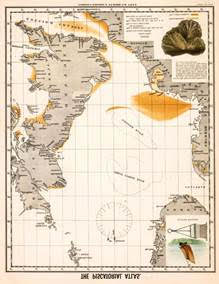
Ostrea edulis European distribution ca. 1883
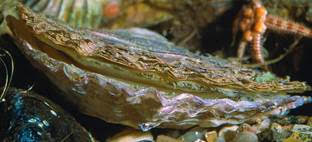
European flat oyster (Ostrea edulis) Photo: A. Maywald (Okapia)
A document was also produced: Bernadette Pogoda, Janet Brown, Boze Hancock, Henning von Nordheim, Eds. The Berlin Oyster Recommendations on the Future of Native Oyster Restoration in Europe, Part I, Preface and Recommendations (see PDF or link). Al related flyer Hope for the European flat oyster (Ostrea edulis): return of a former native species to the German North Sea was also generated (see PDF or link).
See also Jens Gercken and Andreas Schmidt, 2015. Current Status of the European Oyster (Ostrea edulis) and Possibilities for Restoration in the German North Sea, Bundesamt für Naturschutz, 88pp. (see PDF or link)
New Review of Research on Alternative substrates FOR Oyster Reef Restoration
NOAA’s Chesapeake Bay Office has compiled a literature review of published research on alternative substrates used in oyster reef restoration (concrete, porcelain, sandstone, granite, limestone, clam shell, engineered options, etc.). A summary of the effectiveness can be found at link and pdf.
Large-scale projects in the Chesapeake Bay have used oyster shell. However, recently harvested shell is quite limited resource, so states are dredging shell from historic deposits, using mined shell from Florida, or non-oyster bivalve (clam) shell from Atlantic coastal fisheries. Alternatively rock and other materials such as recycled cement or fly ash have been used when available (see link and the Oyster Restoration website).
When Rising Seas Hit Home: Hard Choices Ahead for Hundreds of U.S. Coastal Communities, July 2017, Union of Concerned Scientists
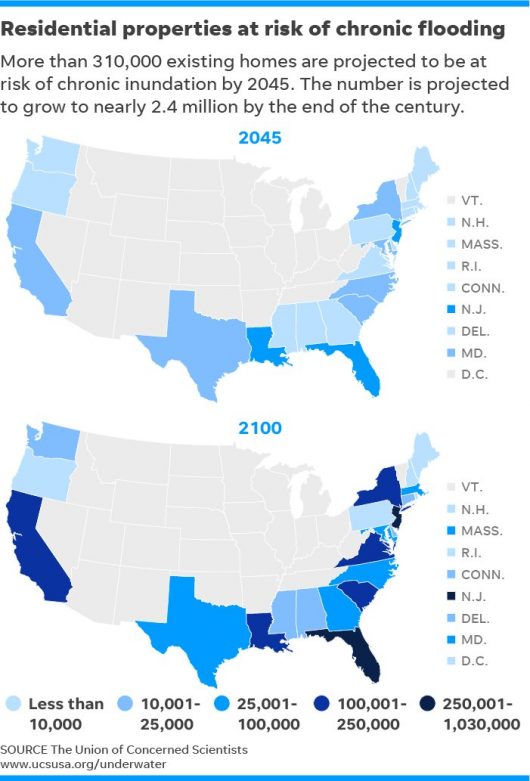 New report and interactive maps identifies when U.S. coastal communities will face a level of disruptive flooding that affects people’s homes, daily routines, and livelihoods. It identifies hundreds of communities that will face chronic inundation and possible retreat over the coming decades as sea levels rise.
New report and interactive maps identifies when U.S. coastal communities will face a level of disruptive flooding that affects people’s homes, daily routines, and livelihoods. It identifies hundreds of communities that will face chronic inundation and possible retreat over the coming decades as sea levels rise.
The findings highlight what’s at stake in our fight to address sea level rise and global warming. They also provide affected communities a measure of how much time they have to prepare.
By Erika Spanger-Siegfried et al.
Download specific state fact sheets (PDFs)
California (English), Florida (English), Georgia, Louisiana, Maryland, Massachusetts, New Hampshire, New Jersey, (English), New York, North Carolina, South Carolina, Texas (English), Virginia
Download complete lists of affected communities (in Excel)
Lists of affected communities by state
Lists of affected communities by year
and sea level rise scenario
see link or PDF for full report
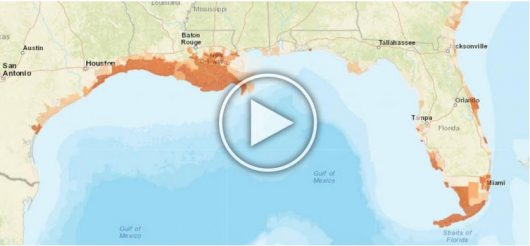
New Dedicated Volume on Living Shorelines
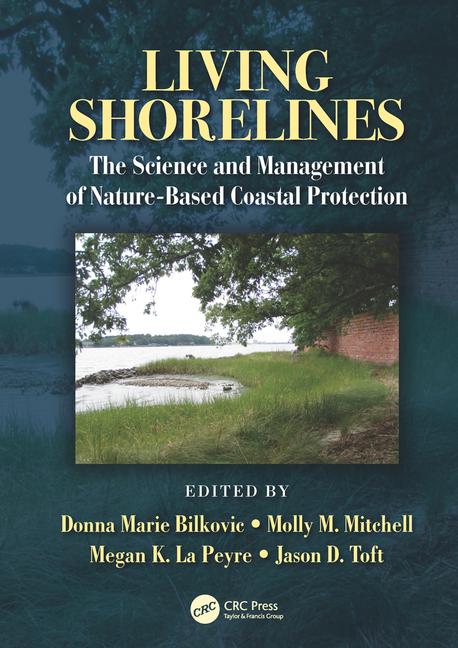 Living Shorelines: the science and management of nature-based coastal protection, edited by
Living Shorelines: the science and management of nature-based coastal protection, edited by
D.M. Bilkovic, M.M. Mitchell, M.K. La Peyre, and J.D. Toft, 2017. CRC Press, 499pp.
ISBN 9781498740029 (see link)
Summary
The new book summarizes and interprets the current state of our knowledge on the science and practice of ‘natural’ shoreline protection. It discusses the correct usage of the term ‘living shorelines’, offers guidance for future shoreline management, and lessons learned. It provides a background of living shorelines, including relevant topics such as management, policy, and project designs, and the science related to living shorelines. Reviews specific design criteria for successful implementation of living shorelines (see PDF for Table of Contents)
Provides detailed discussions of social, regulatory, scientific and technical considerations to justify and design living shoreline projects.
New Gulf Coast Vulnerability Assessment
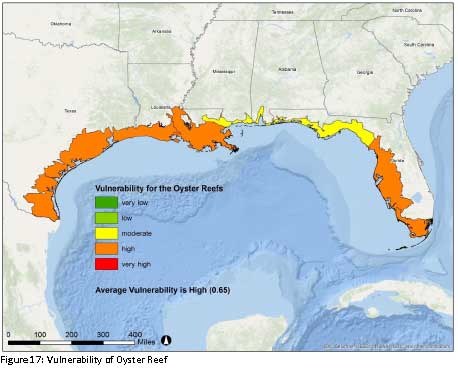 Watson, A., J. Reece, B. E. Tirpak, C. K. Edwards, L. Geselbracht, M. Woodrey, M. K. La Peyre, and P. S. Dalyander. 2017. The Gulf Coast Vulnerability Assessment: Mangrove, Tidal Emergent Marsh, Barrier Islands, and Oyster Reef. Forest and Wildlife Research Center, Research Bulletin WFA421, Mississippi State University. 100 pp.PDF
Watson, A., J. Reece, B. E. Tirpak, C. K. Edwards, L. Geselbracht, M. Woodrey, M. K. La Peyre, and P. S. Dalyander. 2017. The Gulf Coast Vulnerability Assessment: Mangrove, Tidal Emergent Marsh, Barrier Islands, and Oyster Reef. Forest and Wildlife Research Center, Research Bulletin WFA421, Mississippi State University. 100 pp.PDF
Australian Bivalve-Dominate Habitats
Although bivalve habitats are among the most threatened marine habitats on earth little information is currently available on the ecology of these Australian bivalve habitats.
Although shellfish reefs are among the most threatened marine habitats on earth little information is currently available on the ecology of shellfish reefs. Australian shellfish reefs are no different, with only a few species studied in detail (Saccostrea glomerata and Crassostrea gigas). Most Australian shellfish research focuses on describing life history, feeding, husbandry and disease in cultivated species (Crassostrea gigas, Ostrea angasi and Saccostrea glomerata) in support of shellfish aquaculture.
Shellfish reefs can be created by a single shellfish species (e.g. Saccostrea glomerata), or comprised of several reef-building species (for instance where Ostrea angasi co-occurs with Mytilus galloprovincialis or Pinna bicolor). Although shellfish reefs can vary in appearance depending on the dominant reef-forming species, they share a number of common attributes:
https://research.jcu.edu.au/tropwater/research-programs/coastal-estuarine-ecology/shellfish-reef-protection-and-repair/what-are-shellfish-reefs
NC Oyster Restoration and Protection Plan: A Blueprint for Action 2015-2020
Prepared by: NC Coastal Federation
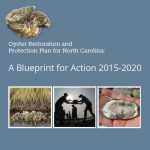 Goals and Action Steps for Oyster Habitat Restoration and Protection (8 pgs.)
Goals and Action Steps for Oyster Habitat Restoration and Protection (8 pgs.)
Pdf and link
Microplastics and The Environment

Some products that contain plastic microbeads (Scott Olson/Getty Images)
Microbead-Free Waters Act of 2015
On December 28, 2015, President Obama signed into law the “Microbead-Free Waters Act of 2015,” prohibiting the manufacture and introduction into interstate commerce rinse-off cosmetics containing intentionally-added plastic microbeads. The new law is aimed at protecting the nation’s waterways and bans the manufacture of plastic microbeads beginning July 2017. It also bans the sale of cosmetics containing microbeads beginning July 2018, and over-the-counter drugs containing these plastic particles by July 2019. See the Act (1½ pages only) at link)
Microplastics and Oysters
See Sussarellu, R., et al. 2016. Oyster reproduction is affected by exposure to polystyrene microplastics. PNAS preprint
Modified from above: Plastics are a newly emerging contaminant of concern for marine ecosystems. They can break down into small particles, called “microplastics”, which as fragments can enter coastal and marine ecosystems as fragments from cosmetics, clothing, and industrial processes. Given their ubiquitous nature and small size, the ingestion and associated impacts on marine organisms are a significant cause for concern, especially for filter-feeding organisms such as bivalve molluscs. This recent paper showed that polystyrenemicroparticles affected oyster energy uptake, allocation, reproduction, and ultimately the performance of the next generation.
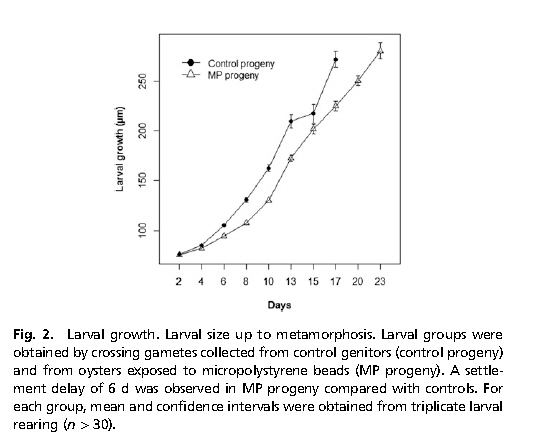
See purchase link
‘Microbeads’ soon will be banned from toothpaste and soaps (from Washington Post)
“Congress and the White House are coming after your toothpaste, facial scrubs and body wash.”
Although relatively little research into the abundance of beads in our waterways, the problem garnered national attention in 2013, after a study found microbeads in the Great Lakes. A recent 2015 study (Rochman et al. 2015, ES&T, see http://pubs.acs.org/doi/pdfplus/10.1021/acs.est.5b03909) estimated that, nationwide, 808 billion beads are washed down drains daily, but with most (up to 99%) probably settling out at local sewage treatment plants. However, even the relatively scant numbers that get through treatment plants amount to an estimated 8 billion daily reaching waterways.
See link
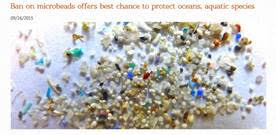
See also http://oregonstate.edu/ua/ncs/archives/2015/sep/ban-microbeads-offers-best-chance-protect-oceans-aquatic-species.
NOAA Releases “Guidance for Considering the Use of Living Shorelines”
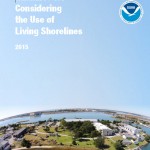 NOAA’s Office of Habitat Conservation releases guidance on the use of Living Shorelines. The document’s aim is to clarify NOAA views on the use of living shorelines as a shoreline stabilization technique along sheltered coasts. Living shorelines can preserve and improve habitats and their ecosystem services at the land-water interface as an alternative to traditional shoreline stabilization techniques like seawalls and bulkheads, which create a barrier between land and water.
NOAA’s Office of Habitat Conservation releases guidance on the use of Living Shorelines. The document’s aim is to clarify NOAA views on the use of living shorelines as a shoreline stabilization technique along sheltered coasts. Living shorelines can preserve and improve habitats and their ecosystem services at the land-water interface as an alternative to traditional shoreline stabilization techniques like seawalls and bulkheads, which create a barrier between land and water.
It includes:
- Living shorelines guiding principles.
- NOAA’s role in providing science, tools, and training to select appropriate techniques;
- Aid in navigating NOAA’s potential regulatory and programmatic roles for LS project planning; and
- Questions to consider when planning a shoreline stabilization effort.
PDF here.
Restore America’s Estuaries. 2015. Living shorelines: from barriers to opportunities. Arlington, VA., 54pp.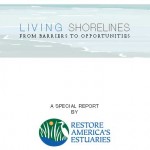
Fostering the Repair of Australia’s Bivalve Habitats & Saltmarshes
 Research suggests that the investment in restoring shellfish habitats and saltmarshes would increase fisheries productivity, along with numerous other ecosystem services. An Australia-wide study of key services found that that the estimated an investment of AU$300 million would be paid back just in increased food production in less than five years.
Research suggests that the investment in restoring shellfish habitats and saltmarshes would increase fisheries productivity, along with numerous other ecosystem services. An Australia-wide study of key services found that that the estimated an investment of AU$300 million would be paid back just in increased food production in less than five years.
Link and PDF.
Let Oysters Get Sick to Clean Up the Chesapeake
The delicious oyster you love to slurp might be the best bet for clearing away pollutants: Smithsonian.com – February 11, 2015
Landscape-level variation in disease susceptibility related to shallow-water hypoxia
 Breitburg, D.L., D. Hondorp, C. Audemard, R.B. Carnegie, R.B. Burrell, M Trice, and V. Clark, 2015
Breitburg, D.L., D. Hondorp, C. Audemard, R.B. Carnegie, R.B. Burrell, M Trice, and V. Clark, 2015
PLoS ONE 10(2):e0116223.doi:10.1371/journal.pone.0116223. pdf
New Report “Inventory of Shellfish Restoration Permitting & Programs in the Coastal States (a timely summary of shellfish policies in 21 coastal states)”
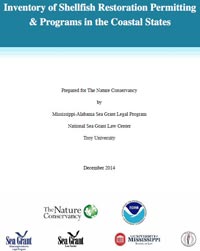 Mississippi-Alabama Sea Grant Legal Program, National Sea Grant Law Center, Troy University, 2014. Inventory of shellfish restoration permitting & programs in the coastal states. Prepared for The Nature Conservancy, under TNC Cost Center Number 1981203049 with additional funding from the NOAA, U.S. Department of Commerce, 189pp.
Mississippi-Alabama Sea Grant Legal Program, National Sea Grant Law Center, Troy University, 2014. Inventory of shellfish restoration permitting & programs in the coastal states. Prepared for The Nature Conservancy, under TNC Cost Center Number 1981203049 with additional funding from the NOAA, U.S. Department of Commerce, 189pp.
pdf and link
New Volume on Marine Community Ecology and Conservation
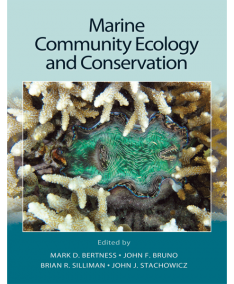
Marine Community Ecology and Conservation, 2014, Mark D. Bertness, John F. Bruno, Brian R. Silliman, John J. Stachowicz, Eds., Sinauer Associates
Two Examples, Chapters 20 & 22. Ch. 20. Threats to marine ecosystems: overfishing and habitat degradation. B. Worm, and H.S. Lenihan, and Ch 22. Marine Restoration Ecology, Sean P. Powers and Katharyn E. Boyer (see TOC and link).
The book is organized into three parts. Part 1- general processes that generate pattern in benthic communities. Part 2- examines the ecology of specific marine benthic community habitats/systems/communities. Part 3- examines conservation and management issues of marine communities, emphasizing ecosystem services and how impacted marine communities are by humans.
MD Oyster Restoration
Tons of fossilized oyster shells headed to Md.
The first of several shipments containing more than 100,000 tons of fossilized oyster shells was unveiled Friday as part of a public-private partnership to help rebuild habitat in oyster sanctuaries on Maryland’s Eastern Shore. The Chesapeake Bay’s Harris Creek Oyster Restoration Tributary Plan targets 377 acres for restoration work. Since 2011, restoration initiated on 188.6 acres of bottom. In 2013, a total of 67.6 acres of reefs were constructed and/or planted with oyster seed from hatchery (spat on shell or SOS) in Harris Creek. The Oyster Recovery Partnership (ORP), with funding from NOAA and MD DNR, planted nearly 712 million seed oysters in Harris Creek from the University of Maryland Horn Pt.’s hatchery. The U.S. Army Corps of Engineers, Baltimore District (USACE) constructed 34 acres of oyster reefs, using a mixture of shell and granite substrate. All 34 acres were then planted with oyster seed.
From the Port of Baltimore an estimated 2,750 tons of fossilized oyster shell in route to Harris Creek in the Chesapeake Bay. The initial barge was the first shipment of material from a FL fossil quarry and additional granite that will be used to construct habitat in several MD oyster sanctuaries. Perhaps 112,500 tons of the fossilized shell and granite shipped in by train will be used to complete the planned reef restoration in Harris Creek and nearby areas in the Little Choptank.
Federal, State and non-governmental partners working together to rebuild Maryland’s native oyster population include: The EPA, NOAA, US ACOE, UMD CES, MDDNR, MD ET, CBF, CSX Corporation, MD Environmental Service, NFWF, and Oyster Recovery Partnership.
Link / PDF / 2013 update
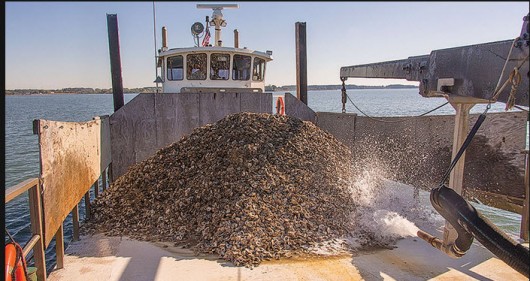
Harris Creek Project On Maryland’s Eastern Shore: Largest Oyster Restoration Effort On The East Coast
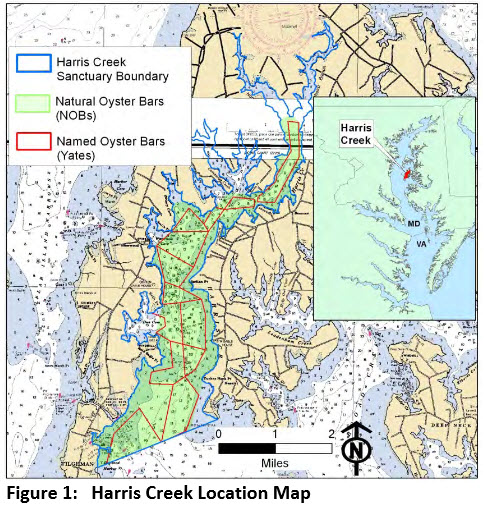 As planned, billions of baby oysters will be placed within the protected sanctuary in Harris Creek, rebuilding more than 370 acres of reef. To date, 110 acres have been planted. This project will also establish a blueprint to expand large scale oyster restoration efforts to other tributaries in the Bay ultimately restoring native oysters in twenty Bay tributaries by 2025. Link / PDF
As planned, billions of baby oysters will be placed within the protected sanctuary in Harris Creek, rebuilding more than 370 acres of reef. To date, 110 acres have been planted. This project will also establish a blueprint to expand large scale oyster restoration efforts to other tributaries in the Bay ultimately restoring native oysters in twenty Bay tributaries by 2025. Link / PDF
Large-scale oyster restoration continues in 6 MD tributaries
By Karl Blankenship on October 05, 2015 (excerpted from Bay Journal)

A crane moves substrate to help rebuild part of a reef on VA’s Great Wicomico River. (U.S. Army Corps of Engineers)
With construction completed at Harris Creek, biologists have proved they can build massive oyster reefs unimaginable a few years ago. Now, the question is: Can they complete nine more in the next decade to meet the Chesapeake Bay Watershed Agreement goal of restoring oyster populations in 10 tributaries by 2025? Large-scale projects are under way in six other tributaries, but many of those are years away from completion and will absorb much of the available resources — from funding to oyster shell — to complete.
For some of those tributaries, the final restoration size has not been established. No decisions have been made about where the final three projects might take place. In general, Maryland projects tend to be further ahead than those in Virginia. The Maryland work started with several large designated sanctuaries, and teams were established for each tributary to develop plans and set restoration goals.
So, while work began in Harris Creek in 2011, major construction started in Virginia only last year. Nonetheless, VA’s progress has been jump-started as two rivers have been identified that had been left largely unharvested for decades — the Lynnhaven and Lafeyette — which are approaching restoration status.
Still, substantial obstacles remain to meeting the 10-tributary goal. Oyster restoration is hugely expensive, with projects often costing tens of millions of dollars. Lessons learned from Harris Creek and other projects so far have provided insights on how to ramp up projects and reduce costs — Harris Creek came in at roughly $6 million less than its original $31 million price tag.
But it’s unclear whether past funding levels will continue in the future. The U.S. Army Corps of Engineers, which spends about $5 million a year on Bay oyster restoration, will meet its spending limit within two years unless Congress authorizes additional money. Funding is especially important for the VA projects. Whereas MD DNR has invested millions in oyster restoration VA support comes from excavated fossil oyster shell donated for restoration projects. While oyster reefs are popular with biologists and environmental groups, the large-scale projects have brought opposition from concerned boaters worried that reefs could affect navigation, and from watermen who were already angered that the sanctuaries used for restoration shut them out of areas that had traditionally been harvested.
Finding suitable — and acceptable — material as reef substrate has been difficult. Watermen have objected to the use of material such as granite that has been used in MD contending it interferes with crabbing and other fishing gear. The supply of oyster shell for reefs is very limited, and its cost is growing as restoration projects face competition from the growing aquaculture industry for the remaining supply. MD DNR even began importing fossil shell from FL to meet demand for oyster shells in Harris Creek and the Little Choptank.
In MD, the DNR is trying new high-tech methods to monitor reefs and prevent poaching. VMRC to revoke fishing licenses for up to 5 years and levy fines of up to $10,000 on poachers.
See http://www.bayjournal.com/article/14395 for more information.
Ocean Acidification
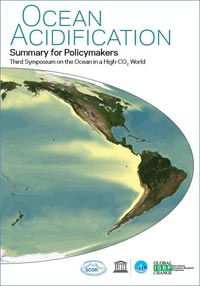
IGBP, IOC, SCOR, 2013. Ocean acidification summary for policymakers – Third Symposium on the ocean in a high-CO2 World. International Geosphere-Biosphere Programme, Stockholm, Sweden, 25pp.
NOAA declares fishery disaster for Apalachicola oysters

U.S. Secretary of Commerce Penny Pritzker today declared a commercial fishery failure of the oysters in Apalachicola Bay, paving the way for federal assistance to oyster fishers. link
Recent Apalachicola Bay Oyster Situation Report that describes a University of Florida Oyster Recovery Team assessment of conditions in Apalachicola Bay, Florida, prior to and after a historic collapse of the oyster fishery in 2012. The document reviews possible causes for the fishery collapse, and outlines a plan for future monitoring, research and fishery management.
Executive Summary (pdf)
Full Report (pdf)
The Blue Carbon Initiative
http://thebluecarboninitiative.org/
Mitigating Climate Change Through Coastal Ecosystem Management

The Blue Carbon Initiative is a global program working to mitigate climate change through the restoration and sustainable use of coastal and marine ecosystems.
Estimate 30% loss of seagrasses globally, 50% loss of tidal marshes globally, and 50% loss of mangroves in the last 50 years.
Highlighted Articles (library)
Coastal Habitats are Crucial for Storm Protection
Arkema, K.K., G. Guannel, G. Verutes, S.A. Wood, A. Guerry, M. Ruckelshaus, P. Kareiva, M. Lacayo, and J. M. Silver, 2013. Coastal habitats shield people and property from sea-level rise and storms. Nature Climate Change 3:913–918 (includes oysters as one of the 7 habitats).
The authors assessed which coastal habitats were most critical to preserve for storm protection, mapping hazards, residential properties, and human populations (particularly the poor and elderly) along the U.S. coast. Oysters were one of the habitats emphasized (PDFs click for articles and related data)
Summary of Arkema et al. Input Data Sources:
- http://www.naturalcapitalproject.org/pubs/ArkemaDataTable_final.pdf
- http://www.naturalcapitalproject.org/pubs/arkema2012.pdf
Guerry, et al., 2013. Coastal Defense and Climate Change: An overview of NatCap work and a plea for help (see Natural Capital Project Annual Meeting 2013: Coastal Defense and Climate Change)
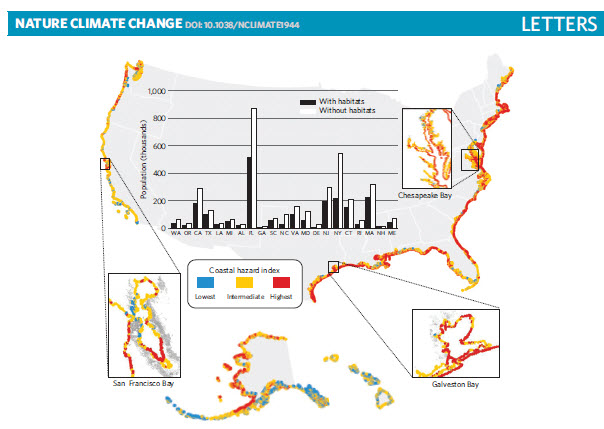
Natural Capital Project and Others
Coastal Habitats Defend U.S. Communities (see http://www.naturalcapitalproject.org/decisions/arkema_coastdefense.html)
Arkema et al. 2006.Marine ecosystem-based management: from characterization to implementation. Front. Ecol. Environ. (http://bio.research.ucsc.edu/people/carr/labmeetingpapers/winter2007/arkema_etal.pdf)
Arkema and Samhouri, 2012. Linking ecosystem health and services to inform marine ecosystem-based management. American Fisheries Society Symposium 79:9–25 (see http://www.naturalcapitalproject.org/pubs/arkema2012.pdf)
Palumbi et al., 2009. Managing for ocean biodiversity to sustain marine ecosystem services. Front. Ecol. Environ, (see http://mcbi.marine-conservation.org/publications/pub_pdfs/Palumbi_etal_Frontiers_2009.pdf)
Delaware Bay Oysters: A Quiet Resurgence
October 9, 2013
– See more at: http://whyy.org/cms/radiotimes/2013/10/09/delaware-bay-oysters-a-quiet-resurgence/#sthash.98hFAmBY.dpuf
Audio from the show: http://whyy.org/cms/radiotimes/2013/10/09/delaware-bay-oysters-a-quiet-resurgence/
And here is a link to our Facebook page with pictures: https://www.facebook.com/media/set/?set=a.10152247290952004.1073742012.240373527003&type=1
Radio Times with Marty Moss-Coane
No easy answers to restore bay’s oyster population
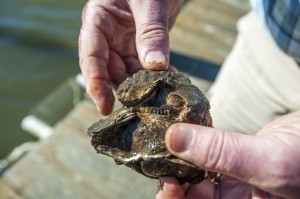
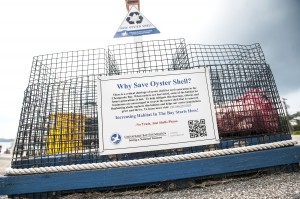
No easy answers to restore bay’s oyster population – MD CapitalGazette
Pathogens and Disease Processes in Marine Molluscs
A dedicated issue on Disease Processes in Marine Molluscs in J. Invert. Path. 131:1-256, 2015
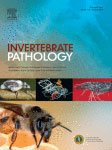
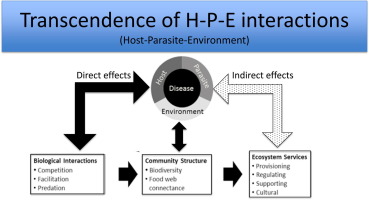
This Special Issue focuses on new knowledge about the pathogens of commercially- and ecologically-important marine molluscs. It contains articles on viruses and bacteria, as well as protists in the Haplosporidia (including Bonamia), Marteiliidae and Perkinsozoa and includes topics that are important to the study of pathogens and disease processes of marine molluscs such as: (1) comparative pathology; (2) immunology; (3) diagnostic methods; (4) genetics, genomics, proteomics, and selective breeding; (5) parasite transmission; (6) ecological impacts of disease and mathematical models; and (7) legislative issues pertaining to molluscan diseases.
(see pdf or link)
Ecology of Infectious Diseases – Oysters and Estuaries

A table of contents and links to all of the articles in this Journal of Marine Research special issue are available at http://hsrl.rutgers.edu/research/EID%20paper%20list.htm.
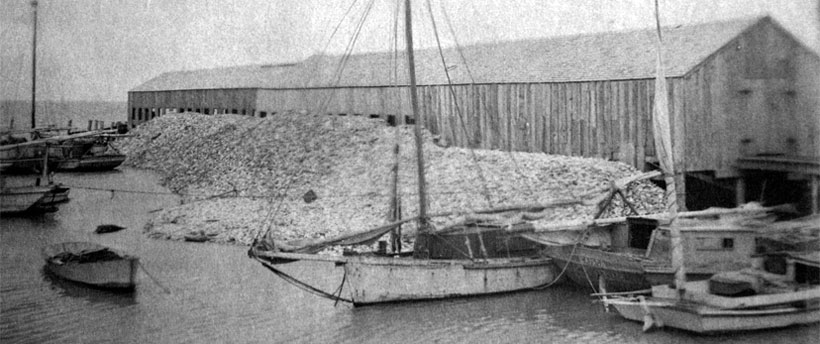
Oyster shells outside an oyster shucking house Credit: Gulf of Maine Cod Project, NOAA National Marine Sanctuaries; Courtesy of National Archives
A new analyses for US entitled: “Historical ecology with real numbers: past and present extent and biomass of an imperilled estuarine habitat”, in (2012) Proc. R. Soc. B 279:3393-3400.
This paper presents the first quantitative and comprehensive estimate for the declines in wild oyster habitats across the U.S. Using available and sufficiently detailed historical records, the paper documents declines in areal extent and biomass (64% and 88%, respectively) using ca. 1900 baseline. Note that changes in area and biomass are not tightly linked, therefore areal loss may be a poor proxy for habitat decline. Although habitat degradation is a global problem, this study is the first to quantify marine habitat degradation over such a large spatial and temporal scale.
Paper can be accessed at http://rspb.royalsocietypublishing.org/content/279/1742/3393.full

